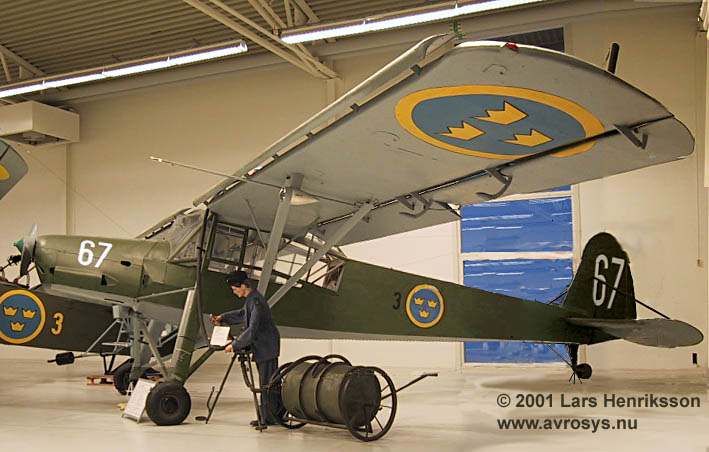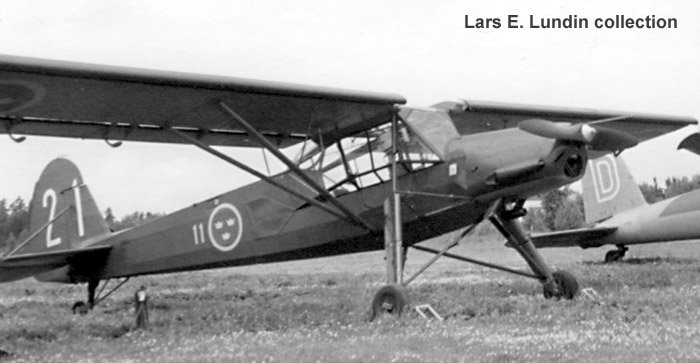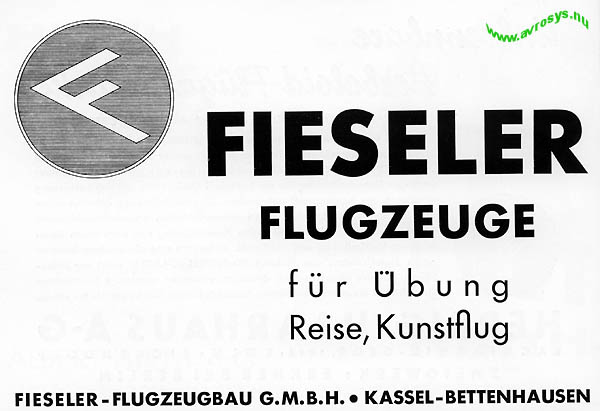|
|
||
| S 14 - Fieseler Storch Fi 156C (1938-1961) | ||
| Page 1 (1) | ||
|
|
||
 |
||
|
The
first prototypes of the German Fieseler Fi 156 Storch (”the Stork”)
flown in 1936. It was taken into service by the Luftwaffe in 1937.
Totally 2.549 Storchs of different versions were built during the war.
The braced high-wing design of the aircraft combined with an extensive
glazed cockpit gave an aircraft with unusually good fields of vision.
The aircraft had exceptional good STOL capabilities. Under favourable
conditions, the aircraft could take off in only 60 metres and land in
only 20 metres.
The
Swedish Air Force ordered two Storchs for evaluation, which were
delivered in the summer of 1938. The Air Force was primarily interested
in an aircraft suitable for fire direction. The Fi 156 proved itself as
a very capable aircraft and six more were ordered and delivered
dismounted by rail. The were mounted at CVM (the Central Aircraft
Workshop at Malmen). All eight aircraft were used for liaison and
reconnaissance aircraft in co-operation with the army.
In
1941, further twelve aircraft were ordered. The delivery was delayed.
First after negotiation with the Germans, which resulted in Sweden as a
compensation had to deliver roller bearings to Germany, twelve used
aircraft were flown to Sweden. During the war, about twenty Storchs
landed in Sweden with refugees and deserters. Six of these were taken
over by the Air Force.
The
first two delivered aircraft were of the variant Fi 156C-1. They got the
designation P 4 (”P” =
Prov = Test) but it was soon changed to S
14. It was powered by the Argus As 10 engine of 270 hp.
The
next batch of six aircraft were designated S
14A. Also this variant had the Argus As 10 engine.
The
last purchased (used) twelve Storchs were of the Fi 156Ca-3 standard and
got the designation S 14B.
The
six emergency landed S 14s
were of the type Fi 156C-3/Trop - the tropical version intended for the
German campaign in Africa. Totally 26 Storchs served in the Swedish Air
Force.
In
the end of WWII, the German Army left the northern Norway southwards,
after destroying all that could be destroyed. A lot of destitute
refugees fled to Sweden over the high mountains in the winter of
1944-1945. Also refugees of other nationalities fled from German prison.
Many died in the hard cold and the snow storms above the Artic Circle,
when the sun never raises during the winter. To help the refugees to
survive, a detachment of four S 14 was formed at the town Kiruna. During
the winter months, 120 people were saved.
One
S 14 is preserved by using parts from two airframes. It is exhibited at Flygvapenmuseum
(photo above) and carries the (fictive) number 3812. Length: 9,90 m. Span: 14,25 m. MTOW (S 14A): 1.320 kg. Max. speed (S 14 A): 175 km/h. |
|
|
 |
||
| Squadron code 21 of Reconnaissance Wing F 11 at Nyköping | ||
|
|
||
 |
||
| Advertisement from Handbuch der Luftfahrt Jahrgang 1937-38 | ||
|
|
||
|
|
||
|
|
||
|
|
||
|
© Lars Henriksson |
Updated 2010-07-17 | |